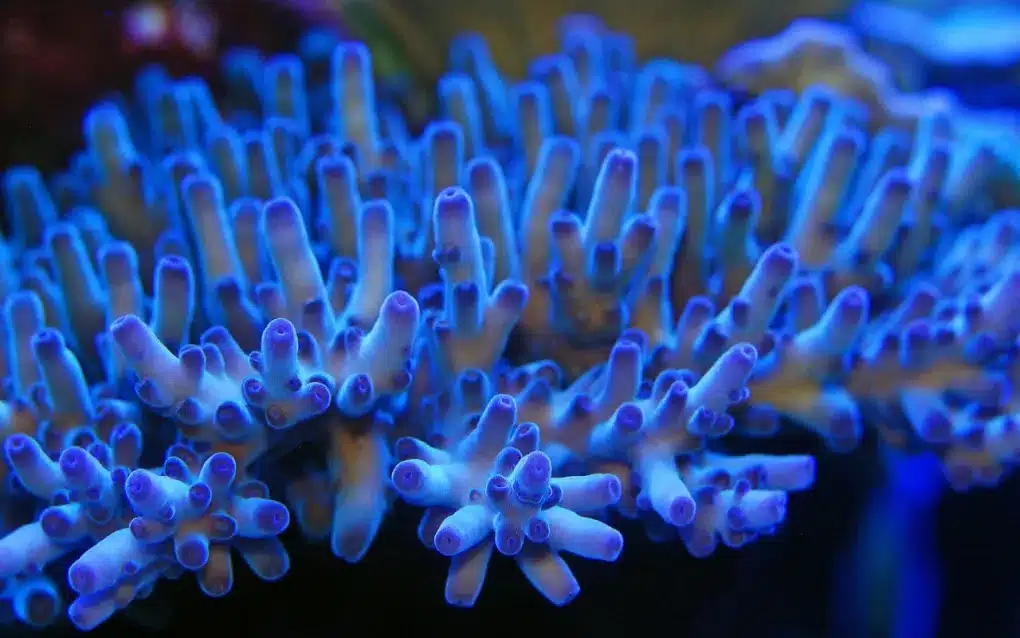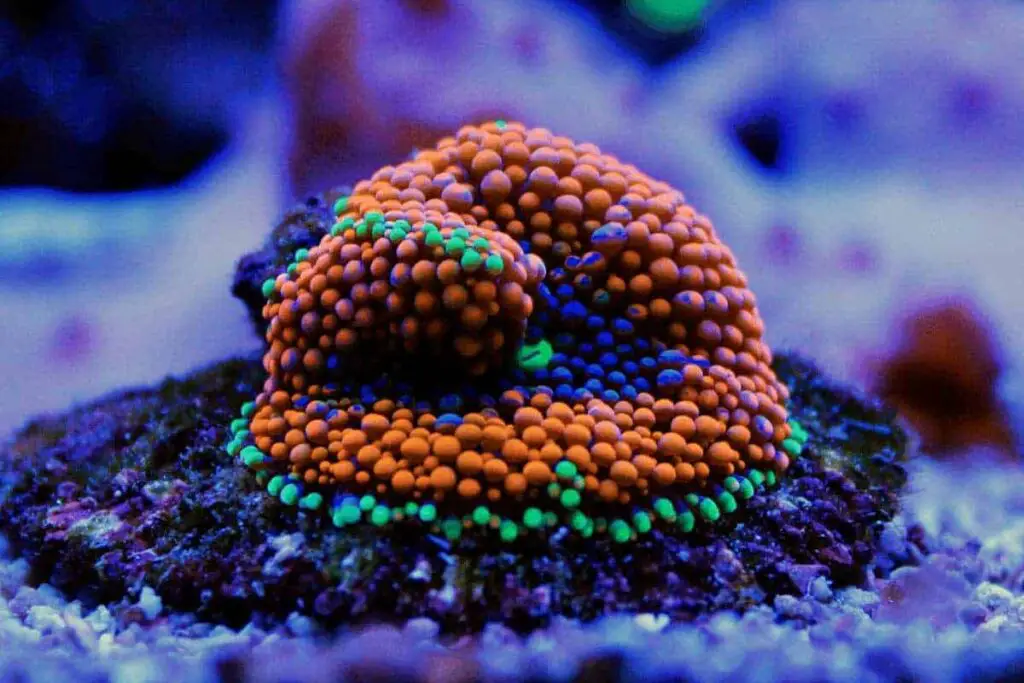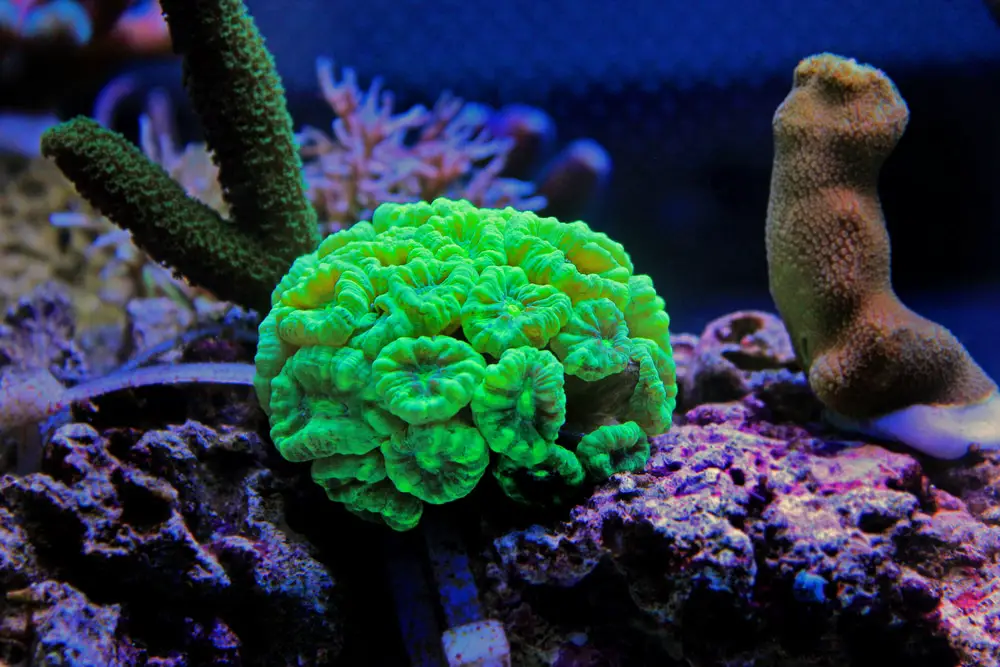How To Acclimate Corals

Introduction
How To Acclimate Corals: Acquiring and maintaining a stunning coral reef aquarium is a rewarding endeavor, but it comes with a critical responsibility: acclimating corals properly. Corals are delicate marine organisms, highly sensitive to changes in water conditions, temperature, and light. Failing to acclimate them correctly can lead to stress, tissue damage, or even death. To achieve a thriving coral reef ecosystem within your aquarium, it’s essential to understand and implement effective acclimation techniques.
The process of acclimating corals involves gradually introducing them to your aquarium’s specific water parameters, ensuring a smooth transition from their previous environment. This helps corals adapt to their new surroundings, minimizing stress and maximizing their chances of thriving.
In this comprehensive guide, we will delve into the art and science of coral acclimation. We will explore various methods, from the commonly used drip acclimation to more advanced techniques, helping you choose the best approach for your unique coral specimens.

How long does it take coral to acclimate?
Some aquarists prefer drip acclimating corals making this process even more gradual, but one should consider the temperature drop-off that occurs during this time as well. The entire acclimation process should not take more than 30 minutes.
The time it takes for coral to acclimate to a new environment can vary widely depending on several factors, including the species of coral, the conditions of the new tank, and the acclimation method used. Generally, the acclimation process can range from a few hours to several weeks.
- Species Variation: Different coral species have varying levels of sensitivity and adaptability. Some hardy corals may acclimate relatively quickly, within a few days, while more delicate and sensitive species may require several weeks to fully adjust to their new surroundings.
- Acclimation Method: The method chosen for acclimation also plays a role in determining how long it takes. Drip acclimation, for example, is a slower and gentler process, whereas the float-and-pour method can be quicker but potentially more stressful for the corals.
- Environmental Factors: Water quality, lighting, water flow, and temperature must be carefully monitored and adjusted as needed during the acclimation process. Rapid changes in these parameters can cause stress and hinder the acclimation progress.
- Individual Variation: Just like people, individual corals may respond differently to changes in their environment. Some may adapt more rapidly, while others may require more time and patience.
How long to acclimate corals to light?
You simply put the entire screen on top of your tank and remove one layer at a time every 4-5 days. If your corals seem a little stressed after you remove a layer, place it back on for 1-2 days and then try again. Overall, this should take you 3-4 weeks but in some cases can go much faster. 4) Use a dimmer.
Acclimating corals to new light conditions is a critical process that demands careful consideration and patience. The duration required for this acclimation can vary significantly based on several factors:
- Coral Species: Different coral species have varying light requirements. Some are highly adaptable and can acclimate relatively quickly, while others, especially those from deeper waters, may require more time to adjust to higher-intensity lighting.
- Lighting Intensity: The intensity of the light source matters. Transitioning from low to high-intensity lighting may necessitate a longer acclimation period compared to a gradual adjustment between light sources with similar intensities.
- Lighting Schedule: The duration of daily exposure to light can also impact acclimation. Starting with shorter photoperiods and gradually extending them over time allows corals to adapt more comfortably.
- Behavioral Observations: Monitoring the behavior of your corals is crucial during this process. Signs of stress, such as polyp retraction or tissue discoloration, may indicate that the lighting needs to be adjusted or that the acclimation period should be extended.
There is no one-size-fits-all timeline for light acclimation, as it varies depending on the specific circumstances. The key is to prioritize the health and well-being of your corals, allowing them the time they need to adapt to their new lighting conditions and thrive in your aquarium.
How do you acclimate corals to new light?
How to acclimate CORALS under NEW LED LIGHTS
- 1) Raise your light fixture. This method is best if you’re using a hanging kit, flexible gooseneck arm, or mounting arms like our adjustable tank mount brackets.
- 2) Reduce your photoperiod.
- 3) Lower your daylight light intensity.
- 4) Place new corals at the bottom of the tank.
Acclimating corals to new light conditions is a crucial step in ensuring the health and vitality of these delicate marine organisms within aquariums or natural reef environments. Corals, particularly the photosynthetic ones, heavily depend on light for their energy production through photosynthesis. Sudden changes in light intensity or spectrum can stress or even harm them. Therefore, a careful and gradual approach to acclimation is essential.
To acclimate corals to new light, the process typically involves several steps. Firstly, it’s essential to research the specific light requirements of the coral species you are working with, as different types have varying light preferences. Once you understand their needs, you can start by placing them in a lower light section of the aquarium or reef for an initial period, often a week or two.
This gradual adjustment allows the corals to adapt and become accustomed to the new light conditions without experiencing shock. Regular monitoring and observation are critical throughout this process to ensure the corals are thriving and responding positively.
Is it necessary to acclimate coral?
However, depending on your aquarium environment, placing them right away can send your specimens into shock. So it’s crucial that you take a bit of time to ensure that each of your new arrivals can adjust to their home. Read this guide to learn how to acclimate corals to an aquarium correctly and keep them healthy.
This process helps mitigate the stress and shock that corals can experience when subjected to changes in light, water chemistry, or temperature. Here are some reasons why acclimating coral is essential:
- Minimizes Stress: Coral reefs are highly sensitive ecosystems, and sudden changes in environmental conditions can stress corals, leading to bleaching, tissue damage, or even death. Acclimation helps them gradually adapt to their new surroundings, reducing the risk of stress-related issues.
- Promotes Health and Growth: Proper acclimation allows corals to adjust to the specific lighting, water flow, and water chemistry of their new habitat. This adaptation period helps them thrive and grow optimally, contributing to the overall health and beauty of the aquarium or reef.
- Prevents Compatibility Issues: If you’re introducing new corals to an existing community of corals or other marine life, acclimation helps in assessing compatibility. This gradual process allows you to monitor how the new coral interacts with its neighbors and make adjustments as needed to avoid territorial disputes or chemical warfare.
- Ensures Long-Term Success: Investing time and care in the acclimation process increases the likelihood of long-term success with your coral specimens. Corals that are properly acclimated are more resilient and better equipped to withstand environmental fluctuations.
Do corals need acclimation?
As Julian pointed out, only in extreme cases of temperature or salinity differences, or with temperamental Xeniids, should you take a few minutes to acclimate your corals. But if you acquired your corals locally, chances are the water quality should be right in line with what you have in your own aquarium water.
Corals do need acclimation when transitioning to a new environment, especially when moving from one aquarium to another or when introduced to a home aquarium for the first time. Acclimation is a critical process for several important reasons:
- Temperature and Water Parameters: Coral reefs in the wild have stable and specific temperature and water parameter conditions. Abrupt changes in these factors can cause stress, leading to coral bleaching or even death. Acclimation helps corals gradually adapt to the new water conditions, ensuring they stay healthy.
- Lighting: Corals have varying light requirements based on their species and natural habitat depth. Sudden exposure to intense lighting can shock and harm them. Proper acclimation allows corals to adjust to the light levels in their new environment gradually.
- Water Flow: Coral species also have different preferences for water flow rates. Acclimation helps them get used to the water flow in their new tank, preventing tissue damage or detachment.
- Transport Stress: When corals are moved or shipped, they can experience stress from handling, changes in water pressure, and limited access to light and nutrients. Acclimation helps them recover and adapt to the new conditions.
- Compatibility: In a new aquarium, corals may encounter different types of inhabitants like fish and other invertebrates. Acclimation allows them to adapt to potential interactions and competition for space and resources.
Should you acclimate corals to light?
Most corals can take nearly as much light you can throw at them, if (and that’s a big if!) you give them enough time to adjust to the new intensity. Slowly adjusting your output over weeks or even months will ensure your corals remain happy and healthy.
Acclimating corals to light is a crucial practice in the care and maintenance of these delicate marine organisms, especially when they are introduced to new lighting conditions. Here are several compelling reasons why acclimating corals to light is essential:
- Minimizing Stress: Corals are highly sensitive to changes in light intensity and spectrum. Rapid exposure to significantly different lighting conditions can cause stress, leading to coral bleaching, tissue damage, or even death. Acclimating corals to new light gradually helps mitigate this stress and allows them to adapt more effectively.
- Adjusting to Specific Requirements: Different coral species have varying light requirements. Some thrive in high-intensity light, while others prefer lower light levels.
- Preventing Shock: Sudden changes in lighting can shock corals, disrupting their metabolic processes and hindering their ability to photosynthesize effectively.
- Observation and Monitoring: During the acclimation period, you have the opportunity to closely monitor the corals for any signs of stress, disease, or pest infestations.
Acclimating corals to light is a critical step in coral care, helping to reduce stress, promote healthy growth, and maintain the overall well-being of these fascinating marine organisms. By taking the time to acclimate corals properly, you can create a thriving and vibrant aquatic environment that showcases the beauty of coral reefs.
How do you acclimate corals to a tank?
Acclimating corals to a new tank environment is a vital process to ensure their health and longevity, whether you’re setting up a new aquarium or introducing new coral specimens to an existing one. Here are the steps to properly acclimate corals to a tank:
- Drip Acclimation: Start by floating the coral in the tank water inside a plastic bag. This helps equalize the temperature between the bag and the tank. After about 15-20 minutes, initiate a slow drip acclimation.
- Monitor Temperature and pH: Throughout the acclimation process, closely monitor the water temperature and pH inside the bag. Ensure that these parameters match those of your tank, as significant differences can stress the coral.
- Light Acclimation: If the coral is sensitive to light changes, consider placing it in a shaded or lower-light area of the tank for the first few days.
- Observe for Signs of Stress: While acclimating, watch for any signs of stress in the coral, such as closed polyps, retracted tissues, or unusual discoloration.
- Quarantine: It’s a good practice to quarantine new coral additions for a period, separate from your main tank, to monitor them for diseases or pests before introducing them to your established reef.
By following these steps, you can help your corals adapt to their new tank environment gradually, reducing stress and increasing their chances of thriving in your aquarium.
What are 3 conditions for coral reef growth?
Clear water: Corals need clear water that lets sunlight through. Warm water temperature: Corals generally live in water temperatures of 68–90° F or 20–32° C. They have tolerance to a very narrow temperature range. Clean water: Corals are sensitive to pollution and sediments.
Coral reefs, some of the most diverse and productive ecosystems on Earth, require specific conditions for their growth and survival. Here are three fundamental conditions necessary for coral reef growth:
- Warm Water Temperatures: Corals are most commonly found in tropical and subtropical regions where water temperatures remain relatively warm, typically between 20°C (68°F) and 29°C (84°F). This warmth is crucial for the symbiotic relationship between corals and the photosynthetic algae (zooxanthellae) that live within their tissues.
- Shallow and Clear Water: Coral reefs thrive in clear, sunlit waters. Clear water allows sunlight to penetrate to the symbiotic algae within the coral, providing the energy needed for photosynthesis. Shallow depths are preferred because they enable the corals to receive adequate light while staying within the photic zone, the region of the ocean where sunlight can penetrate. The clarity of the water is vital for maintaining the health and vibrancy of the reef ecosystem.
- Stable Salinity and Water Quality: Corals are highly sensitive to fluctuations in water quality, including salinity, pH, and nutrient levels. Stable salinity levels are crucial for the proper functioning of coral cells and their symbiotic algae. Excessive nutrients from pollution or runoff can lead to harmful algal blooms and damage to coral reefs. Maintaining a stable and balanced marine environment is essential to support coral growth and reef health.

Conclusion
Acclimating corals is a crucial step in ensuring their health and survival in a home aquarium. This process, although simple in concept, demands careful attention to detail and patience. Throughout this guide, we have emphasized the significance of maintaining stable water parameters and gradually exposing corals to their new environment.
Additionally, we have stressed the importance of researching and understanding the specific needs of the coral species you intend to keep. Different corals have varying requirements in terms of light, water flow, and placement within the tank. Tailoring the acclimation process to meet these unique needs is key to fostering a successful and vibrant coral reef ecosystem.
Ultimately, the journey of acclimating corals is an investment in the beauty and diversity of your marine aquarium. By giving your corals the time, care, and attention they require during this critical phase, you can enjoy the rewards of a thriving, colorful, and sustainable coral reef for years to come. Remember, patience and diligence are the keys to success when it comes to acclimating corals in your aquarium.



